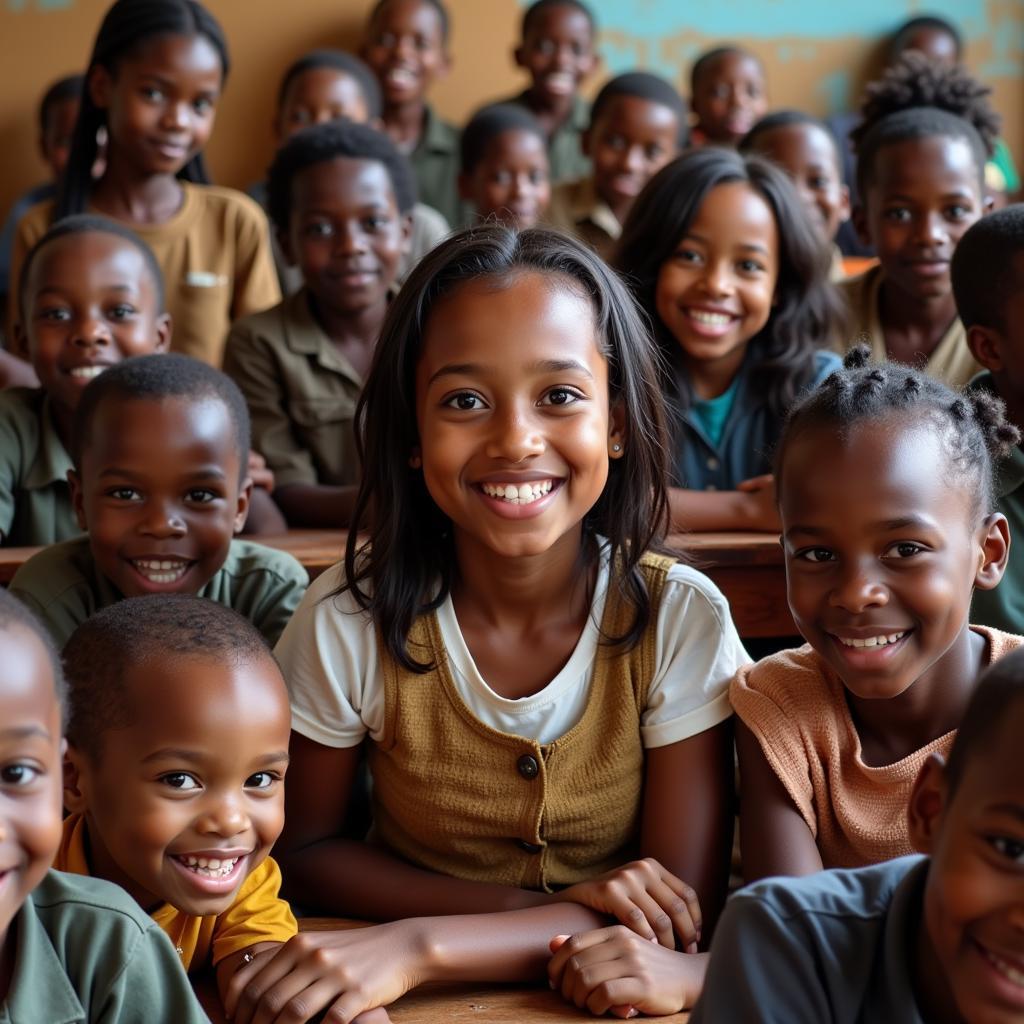Exploring the Vibrant World of African Figurative Paintings
African Figurative Paintings offer a captivating glimpse into the rich tapestry of cultures, traditions, and stories across the African continent. These artworks, far from mere aesthetic expressions, serve as powerful vehicles for conveying complex narratives, spiritual beliefs, and social commentaries. From ancient rock art to contemporary canvases, the human form takes center stage, embodying a diverse range of emotions, identities, and experiences. See how these paintings connect us to the heart of Africa.
A Journey Through Time: The History of African Figurative Paintings
Figurative art in Africa boasts a long and illustrious history. Its roots can be traced back to prehistoric times, evident in the mesmerizing rock paintings found across the continent, particularly in places like the Tassili n’Ajjer mountain range in Algeria. These ancient depictions offer valuable insights into the lives and beliefs of early African societies. african art history timeline provides a broader view of African art’s development. Moving forward through time, figurative painting continued to evolve, influenced by various factors such as the rise of powerful kingdoms, interactions with different cultures, and the advent of colonialism. Each historical period contributed unique styles and themes to the ever-expanding repertoire of African figurative art.
Understanding the Styles and Symbolism
African figurative paintings are incredibly diverse, reflecting the vast array of cultures and artistic traditions that flourish across the continent. From the bold, geometric forms of the Ndebele people of South Africa to the intricate, narrative-driven paintings of the Yoruba people of Nigeria, each style carries its own distinct aesthetic language. The use of color, composition, and symbolism varies significantly, each element contributing to the overall meaning and impact of the artwork. Symbolism, particularly, plays a crucial role in African figurative paintings. Certain colors, animals, and objects often hold deeper cultural and spiritual significance, adding layers of meaning beyond the immediate visual representation. For example, the depiction of a leopard might symbolize power and royalty, while certain colors might represent specific deities or ancestors.
What are the common themes in African figurative paintings?
Common themes explored in African figurative paintings include daily life, spirituality, ancestry, leadership, and social commentary. These themes often intertwine, creating rich and multifaceted narratives that reflect the complexities of human experience.
How do African figurative paintings reflect cultural identity?
African figurative paintings serve as powerful expressions of cultural identity, preserving and celebrating the unique traditions, beliefs, and values of different communities. These artworks often depict specific ceremonies, rituals, and social practices, offering a visual record of cultural heritage passed down through generations. african art forms offers a broader perspective on diverse artistic expressions across Africa.
African Figurative Paintings in the Modern Era
African figurative paintings continue to thrive in the modern era, adapting to new influences and artistic trends while maintaining a strong connection to their cultural roots. Contemporary African artists are pushing the boundaries of traditional forms, experimenting with new materials, techniques, and themes, while simultaneously engaging with global artistic dialogues. The rise of digital art and online platforms has also expanded the reach and accessibility of African figurative paintings, allowing artists to connect with wider audiences and share their stories with the world. african art style images provides a wider selection of visual examples.
Who are some notable African figurative painters?
Numerous talented artists have contributed to the rich legacy of African figurative painting. While specific names vary across regions and time periods, some notable figures include Ben Enwonwu (Nigeria), Irma Stern (South Africa), and Chéri Samba (Democratic Republic of Congo). Their distinctive styles and powerful narratives have shaped the trajectory of African art and continue to inspire new generations of artists.
“African figurative paintings are not just about depicting the human form; they are about capturing the essence of human experience within a specific cultural context,” says Dr. Abena Oduro, a renowned art historian specializing in African art.
“The beauty of African figurative painting lies in its ability to communicate complex ideas and emotions through a visual language that transcends words,” adds Kwame Asante, a contemporary Ghanaian artist.
Conclusion: The Enduring Power of African Figurative Paintings
African figurative paintings stand as a testament to the enduring power of art to capture the human experience, preserve cultural heritage, and inspire dialogue across generations and cultures. These vibrant artworks invite us to delve into the rich tapestry of African Life, exploring its diverse narratives, spiritual beliefs, and social commentaries. By appreciating and understanding African figurative paintings, we gain a deeper appreciation for the beauty, complexity, and resilience of African cultures. Explore african cheetah vessel and african art gallery boston for more insightful connections to African art.
FAQ
- What is the significance of masks in African figurative art?
- How has colonialism impacted African figurative painting?
- What are some key differences between traditional and contemporary African figurative art?
- Where can I view collections of African figurative paintings?
- How can I support contemporary African artists?
- What is the role of storytelling in African figurative paintings?
- Are there any specific rituals or ceremonies associated with African figurative art?
For further exploration, consider researching specific artists, cultural groups, or historical periods related to African figurative painting. You might also explore the connection between African figurative art and other art forms, such as sculpture, textiles, and music.
When you need assistance, please contact us at Phone Number: +255768904061, Email: kaka.mag@gmail.com Or visit our address: Mbarali DC Mawindi, Kangaga, Tanzania. We have a 24/7 customer care team.

